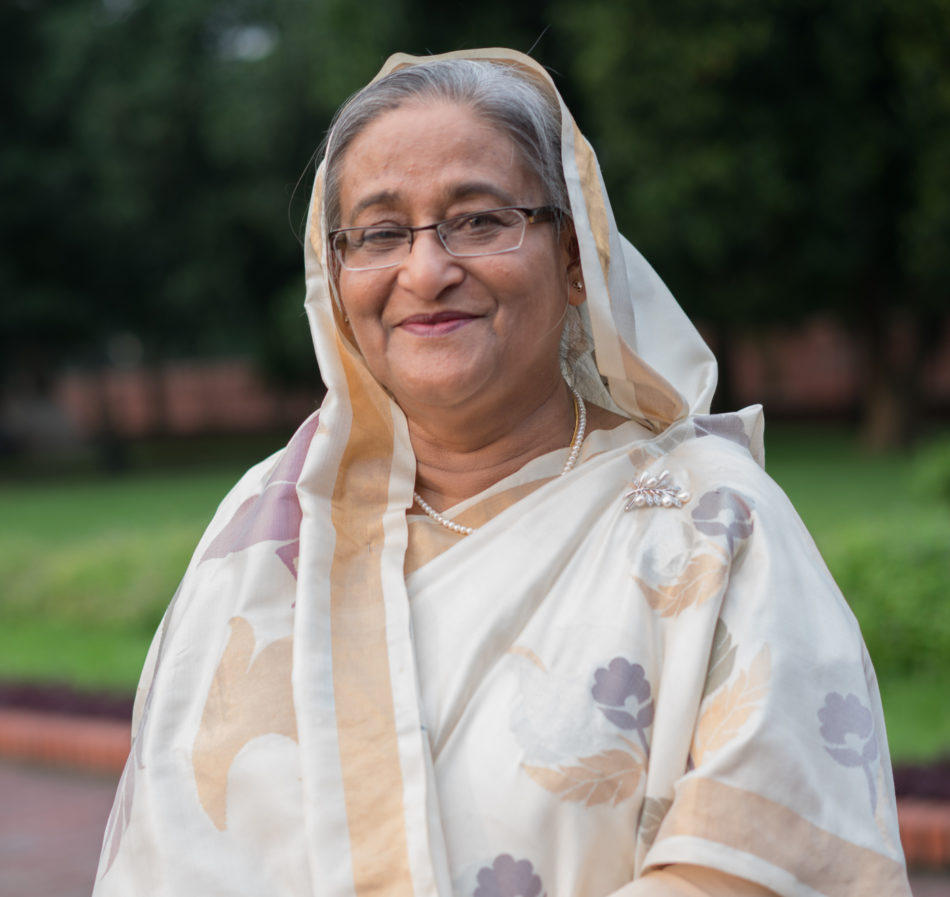Bangladesh’s Foreign Minister AK Abdul Momen arrived in India last month to fight political fires. But he found himself dealing with massive floods that hit Sylhet and Assam. Nature has its ways to convey that not all is well in India’s near-east. Far from the glitz about Bangladesh’s economic success, on display during the recent inauguration of the Padma Bridge, clampdown on Islamists, and shrewd management of big power rivalries, is a parallel potent reality of Prime Minister Sheikh Hasina’s authoritarianism, heightened polarization and economic distress. As an Indian official mentioned to me, and a Bangladeshi official echoed, Hasina “has built a house of cards”.
The economic, social, and political ground under Hasina’s feet is shifting in real time. It is slow enough to be dismissed as non-urgent, but sure enough to become pressing, if not dealt with urgently. With general elections due in 2023, and external debt repayment schedules kicking in from 2024, it is a matter of time for the veneer of (forced) stability to lose its sheen. The risk of dislocation, if not collapse, of this so-called house of cards has increased in recent years, and it could undermine whatever is left of India’s connectivity aspirations in its near east.
Domestically, the Hasina government has exacerbated two contradictions in a traditionally polarized polity. One, she is in power, but with little to no electoral legitimacy. The Awami League’s (AL) manipulation of the 2014 and 20l18 elections (a practice not just reserved for national elections and against opponents), unceasing harassment of its key opponent, the Bangladesh Nationalist Party (BNP), gagging of media, social media monitoring using advanced digital surveillance, and a forced tilt towards the conservative Islamic Right as a balancing move after targeting these formations using force, has created wide pockets of intense frustration.
Unlike her father, Sheikh Mujibur Rahman, who created a one-party State but failed to contain a famine in 1974, Hasina has placed her bets on economic development. The argument runs that good economic performance coupled with liberal use of force will make a one-party State under Hasina’s leadership sustainable. But this is where the second contradiction kicks in. Bangladesh’s external debt to Gross Domestic Product ratio has increased to 21.8%, import spending has shot up by nearly 44%, Forex reserves of $42 billion are falling and can cover about five months’ worth of imports, and the revenue from readymade garments export and remittances is not keeping pace with the fast rising costs to the exchequer.
Couple this with the global inflation created by the Russia-Ukraine war and United States-led sanctions, and it becomes clear why Momen is asking India to remove anti-dumping duties on Bangladeshi jute exports. Further complicating this situation is Dhaka’s propensity to accept external loans for infrastructural projects at highly inflated costs, making repayment difficult. One of the cases in point is the 2015 Rooppur Nuclear Power Plant deal with Russia for which Dhaka is to repay $13.5 billion. India paid $3 billion for a similar plant in Kudankulam.
Why does Dhaka accept such deals? Because external finance fuels (limited) infrastructural growth, chronic corruption, and keeps the political illusion of economic development alive. To be clear and fair, Bangladesh’s economic journey has been more than commendable. But to expect an economic miracle, which is bound to dwindle due to internal or external shocks, to sustain a corrupt system pretending to be a democracy is a tall ask. Herein, Hasina has ensured that neither the Islamists nor the BNP — which enjoys public sympathy, even if it may not get a fair election — pose a serious challenge to her.
But her real challenge doesn’t come from known opponents. It comes from opaque factions within a securitized State (and the party) that has made so much illicit profit that being out of power is not an option for them. This leaves Hasina with an unenviable dilemma. Either she allows free elections and risks being ousted or manipulates them and invites international opprobrium that could unleash mass protests and violence. Bereft of a clear succession plan, both these scenarios could tempt opportunistic adversaries to force a regime change, of which there is an unfortunately rich history in Bangladesh.
Hasina’s internal problems are linked to external dependencies. Politically reliant on New Delhi, she is finding it increasingly difficult to manage the ramifications of India’s turn towards Hindu nationalism that misuses migration from Bangladesh and the Rohingya crisis for domestic electoral gain. Similarly, accepting of Chinese finance that may not translate into political support, Dhaka is struggling to keep targeted US sanctions against the Rapid Action Battalion, an anti-crime and anti-terrorism unit of the Bangladesh Police, for serious human rights violations, at bay. Dhaka’s replacement of its ambassador in Washington DC after a visit by a team of AL parliamentarians from the standing committee on foreign affairs will make little difference in how the US deals with Bangladesh.
Add to this, an uptick in demand for repatriating Rohingya migrants — some of whom have been silently resettled in the Chittagong Hill Tracts to the locals’ displeasure — to Myanmar, including within Bangladesh’s military establishment, and the situation becomes even more volatile. Hasina requires a political off-ramp to prevent a foreseeable crisis that can turn violent. The last thing the subcontinent needs is turmoil in Bangladesh.
*The writer teaches at SOAS University of London and is the author of My Enemy’s Enemy: India in Afghanistan from the Soviet Invasion to the US Withdrawal (New York: Oxford University Press, 2017)
(Hindustan Times)
July 19, 2022
The viewpoints expressed by the authors do not necessarily reflect the opinions, viewpoints and editorial policies of Aequitas Review.


